2025 New England Power Grid
The region’s wholesale electricity marketplace is securing reliable electricity at competitive prices and helping usher in a cleaner, greener grid.
A Major Energy Transformation Is Underway
New England has shifted away from older coal- and oil-fired generation to natural gas.
2000 Energy Resources
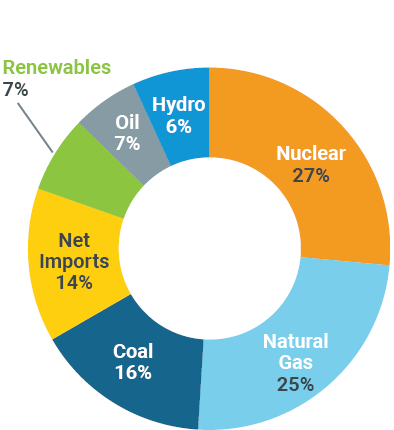
Most of today’s electricity production comes from lower-emitting energy resources.
2024 Energy Resources
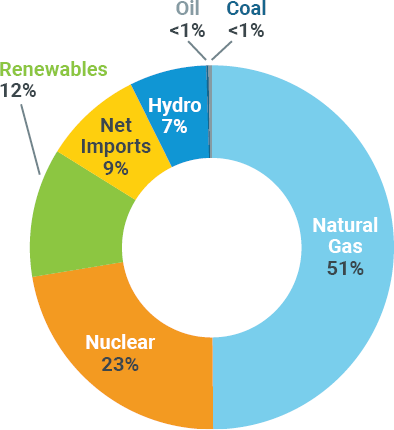
Charts show the amount of electricity produced by generators in New England and imported from other regions to satisfy all residential, commercial, and industrial customer demand in New England. This is called Net Energy for Load (NEL).
The region is transitioning to large-scale clean and renewable energy.
Looking to the Future

Battery storage technologies dominate new resource proposals: nearly 18,000 MW proposed

Wind power new resource proposals continue to account for nearly half of the queue: more than 17,000 MW

Solar power is growing rapidly: ISO-NE forecasts almost 13,500 MW within a decade

New transmission proposals would provide access to additional clean or renewable energy in New England or Eastern Canada
Generator Emissions Have Declined
CO2 emissions declined with shift from coal and oil to natural gas generation.
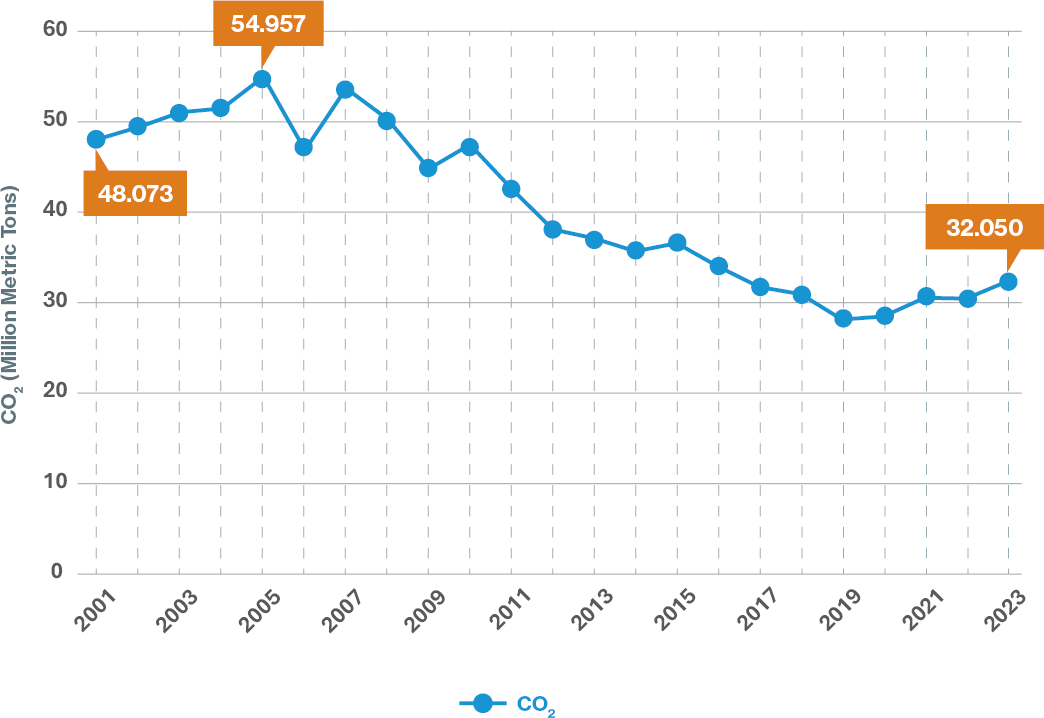
Wholesale Electricity Prices Vary
Year-to-Year
Fuel costs are a key driver of electric prices.
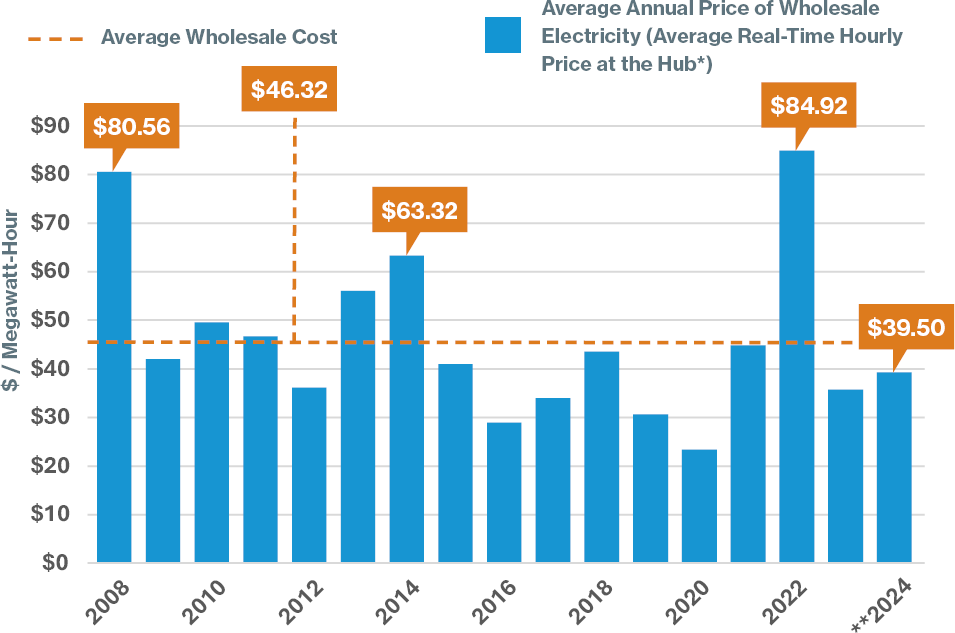
* The Hub is a collection of 32 locations in New England used to represent an uncongested price for electric energy.
** 2024 data are subject to adjustments.
Electrification Will Drive Electricity Demand

In New England, demand for electricity peaks in the summer (record: 28,130 MW, August 2006); a smaller peak occurs in the winter (record: 22,818 MW, January 2004).
While state-sponsored energy-efficiency (EE) and behind-the-meter solar photovoltaic (PV) programs have slowed growth, the ISO forecasts that both energy usage and peak demand will increase slightly in New England over the next 10 years. The primary factors for this increase are the new electrification forecasts for electric vehicles and air-source heat pumps.
Forecasted Annual Growth Rates for New England Through 2033
| Without EE & PV | With EE & PV | |
|---|---|---|
| PEAK DEMAND (50/50 SUMMER PEAK): |
1.1% | 1.1% |
| OVERALL DEMAND: | 2.0% | 1.8% |
New England Has Nearly 30,000 Megawatts (MW) of Installed Electricity Generating Capacity
The power generation resource mix is transitioning to a fleet powered by natural gas, and renewable energy.
Generation Retirements
Coal- and oil-fired power plants make up 22% of the region’s electricity generating capacity and 2% of the electricity produced in New England, and tend to be used only during peak demand periods.
Almost 8,000 MW of generation have retired since 2013 or may retire in the next few years.
Proposed Generation
Developers have proposed 38,474 MW of new generating resources as of January 2025.
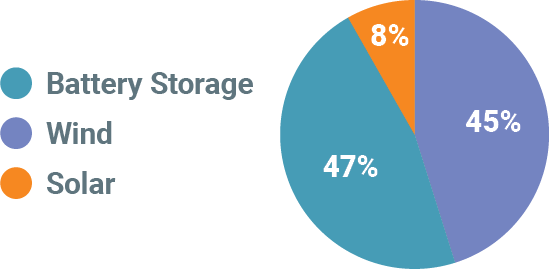

About 9,000 miles of high-voltage transmission lines span the six states. The ISO is working with the New England states to evaluate potential future transmission needs to identify, at a high-level, transmission infrastructure necessary to meet the New England states’ energy policies, mandates, or legal requirements.
Imported Power
On an annual basis, New England is generally a net importer of electricity via interconnections with neighboring power systems in New York, Quebec, and New Brunswick.
Percentage of net energy from imports
| 21% 2020 |
16% 2021 |
14% 2022 |
13% 2023 |
9% 2024 |
Merchant transmission companies, electric utilities, and renewable energy developers are proposing several projects to deliver low- or non-carbon-emitting resources into the New England market, totaling approximately 10,600 MW.
Wind Power
Roughly 1,500 MW of wind power is operational in the region. Developers are proposing over 17,000 MW of additional wind power, primarily offshore in southern New England.
Solar Power
State policies are promoting development of behind-the-meter distributed resources, specifically solar PV resources.
ISO-NE 2024 Solar PV Forecast

Adding renewable resources will help displace fossil-fueled resources as well as help achieve state policy objectives. This will require fast-responding resources like grid-scale energy storage to help balance the variability of renewables.
